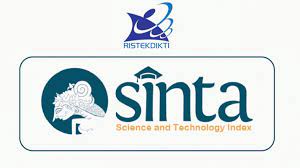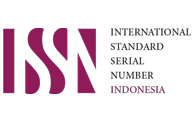Enhancing English Literacy through Collaborative Learning Programs for Middle School Students
Keywords:
English Literacy, Problem-Solving Collaboration, Learning Motivation, Community ServiceAbstract
The ability to master English literacy plays a crucial role in facing global competition. However, junior high school (SMP) students in Indonesia often struggle to acquire it. Factors such as less interactive teaching methods, low motivation, and limited learning facilities are the main obstacles. This community service program aims to improve the English literacy of 7th-grade students at SMP 5 Pamekasan Regency through a collaborative learning approach. This method is designed to encourage cooperation, discussion, and knowledge sharing among students, teachers, and researchers. The study employs a qualitative approach with a descriptive design, involving teachers and students as participants. The observations and evaluations show an increase in student motivation, engagement, and understanding of English material. Pre-test and post-test assessments also indicate a significant improvement in students' literacy skills. This program is expected to serve as a model for other schools in enhancing students' English literacy through collaborative learning.
Downloads
References
DAFTAR PUSTAKA
Allen, V. L., & van de Vliert, E. (1984). A role theoretical perspective on transitional processes. V. L. Allen & E. van de Vliert. Role transitions (pp. 3–18). Boston, MA: Springer.
Andrews, J. J., Kerr, D., Mislevy, R. J., Davier, A. V., Hao, J., & Liu, L. (2017). Modelling collaborative interaction patterns in a simulation-based task. Journal of Educational Measurement, 54(1), 54–69. https://doi.org/10.1016/j.nedt.2024.106381
Arkers Kwan Ching Wong, Engle Angela Chan, Kadence Shuk Yu Chan, Jacqueline Johnston, Gulzar Malik, Monica Peddle, Katherine Frodsham Webster. (2024). The effects of video-based simulation in Collaborative Learning in a Student-led Global Classroom (CLSGC) program on non-technical skills among undergraduate nursing students in three regions: A mixed-methods study. Nurse Education Today 143 (2024) 106381.
Bakhtiar, A., & Hadwin, A. F. (2020). Dynamic interplay between modes of regulation during motivationally challenging episodes in collaboration. Frontline Learning Research, 8(2), 1–34. https://doi.org/10.14786/flr.v8i2.561.
Barron, B. (2003). When smart groups fail. The Journal of the Learning Sciences, 12(3), 307–359. https://doi.org/10.1207/S15327809JLS1203_1.
Care, E., Scoular, C., & Griffin, P. (2016). Assessment of collaborative problem solving in education environments. Applied Measurement in Education, 29(4), 250–264. Cesareni, D., Cacciamani, S., & Fujita, N. (2016). Role taking and knowledge building in a blended university course. International Society of the Learning Sciences, 11, 9–39.
Creswell, J. W. (2009). Research design: Qualitative, quantitative, and mixed methods approaches (3rd ed.). SAGE Publications.
Cameron, L. (2001). Teaching Languages to Young Learners (Cambridge Language Teaching Library). Cambridge: Cambridge University Press. doi:10.1017/CBO9780511733109
De Backer, L., Van Keer, H., & Valcke, M. (2015). Socially shared metacognitive regulation during reciprocal peer tutoring: Identifying its relationship with students’ content processing and transactive discussions. Instructional Science, 43(3), 323–344. https://doi.org/10.1007/s11251-014-9335-4 Dillenbourg, P. (1999). What do you mean by collaborative learning? In P. Dillenbourg (Ed.), Collaborative-learning: Cognitive and computational approaches (pp. 1–19). Elsevier.
Fiore, S. M., Graesser, A., & Greiff, S. (2018). Collaborative problem-solving education for the twenty-first-century workforce. Nature Human Behaviour, 2(6), 367–369.
Fiore, S. M., Rosen, M. A., Smith-Jentsch, K. A., Salas, E., Letsky, M., & Warner, N. (2010). Toward understanding macrocognition in teams: Predicting processes in complex collaborative contexts. Human Factor, 52(2), 203–224.
Koesnandar, A. (2021). Pembelajaran kolaboratif di era dan pasca pandemi, mengapa tidak? Retrieved April 25, 2022, from https://pusdatin.kemdikbud.go.id.
Masita, E. (2024). Pengajaran Bahasa Inggris dalam Kurikulum Merdeka. PT MEDIA PENERBIT INDONESIA. Medan.
Shanyun He a, Xinyue Shi a, Tae-Hee Choi b, Junqing Zha. (2023). How do students’roles in collaborative learning affect collaborative problem-solving competency? A systematic review of research. Thinking Skills and Creativity 50 (2023) 101423. https://doi.org/10.1016/j.tsc.2023.101423.
Roschelle, J., & Teasley, S. D. (1995). The construction of shared knowledge in collaborative problem solving. In C. O’Malley (Ed.), Computer supported collaborative learning (pp. 69–97). Springer. https://doi.org/10.1007/978-3-642-85098-1_5.
Sara Ahola *, Jonna Malmberg, Hanna J¨ arvenoja. (2024). Investigating upper-secondary school learners’ contributions in co-regulation and socially shared regulation during collaborative learning. Learning, Culture and Social Interaction 49 (2024) 100870. https://doi.org/10.1016/j.lcsi.2024.100870.
Yuanzhu Di, Libao Deng∗, Lili Zhang. (2024). A collaborative-learning multi-agent reinforcement learning method for distributed hybrid flow shop scheduling problem. Swarm and Evolutionary Computation 91 (2024) 101764. https://doi.org/10.1016/j.swevo.2024.101764.
Downloads
Published
Versions
- 2025-01-15 (2)
- 2024-12-26 (1)
Issue
Section
License

This work is licensed under a Creative Commons Attribution-ShareAlike 4.0 International License.
Licence
![]() Creative Commons license
Creative Commons license
Journal published by Larisa Multidisciplinary Service licensed under a Creative Commons Attribution-ShareAlike 4.0 International License
You are free to:
Share — copy and redistribute the material in any media or format
Adapt — remix, transform, and develop material for any purpose, even commercially
Under the following conditions:
Attribution — You must give appropriate credit, provide a link to the license, and indicate if any changes have been made. You may do so in any reasonable way, but not in any way that would imply that the licensor endorses you or your use.
Share Alike — If you mix, modify, or build upon the material, you must distribute your contributions under the same license as the original
No additional restrictions — you may not apply legal terms or technological measures that legally restrict others from doing anything the license permits













